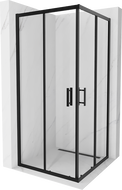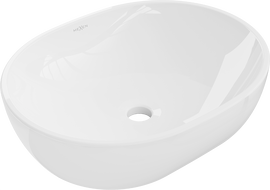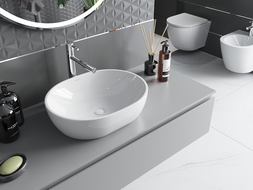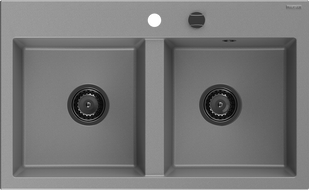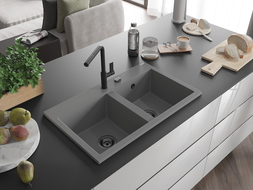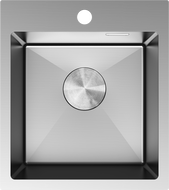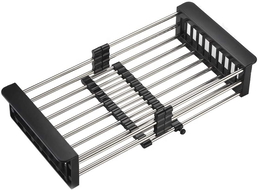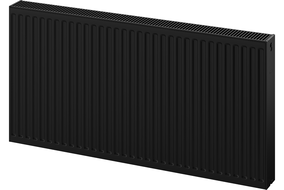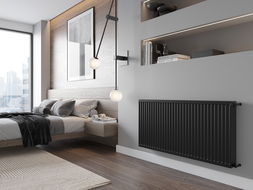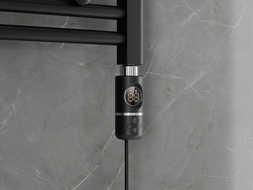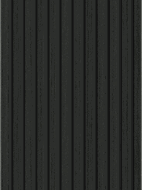
Maintaining the right temperature in the fridge is key to keeping food fresh. Values that are too low will freeze food and frost the walls, while those too high will accelerate decay processes. Let's check what temperature in the fridge is right and why proper cold distribution is so important.
What will you learn from this article?
- Where in the fridge to store selected products.
- How to set the proper cooling temperature inside the fridge.
- What cooling solutions modern fridges offer.
How to organize the inside of the fridge?
Temperature fluctuations can be observed inside the fridge, which is why a varied distribution of food is so important.
- In the lowest containers, where the temperature is maintained at 7-8 degrees Celsius, vegetables and fruits should be stored.
- On the shelf above the baskets, you can place meat and fish - 2 degrees is the optimal temperature for storing perishable foods.
- The top and middle shelves are ideal for storing:
- dairy,
- cold meats,
- cheeses
- pre-prepared dishes (the temperature in this section hovers around 4 degrees).
The relatively highest temperature is on the “balconies”, i.e., the shelves on the fridge doors, so it's worth placing food products there that don't require strong cooling (sauces, spices, or drinks). Importantly, remember not to put hot dishes in the fridge – hot air rises, raising the temperature and making the fridge work harder, which generates higher energy consumption.
And what if you have an older model fridge?
If you have an older generation fridge and you want to check if the thermal stratification is appropriate, you can invest in a special elongated thermometer for fridges that measures temperature over a wide range. With it, the optimal temperature in the fridge, even of an older type, will be achievable.
Proper temperature in the fridge is not everything! Remember that food cannot be too densely packed or touch the refrigerator walls. Fresh meat should be kept in airtight containers. The way food is stored significantly influences its shelf life.
How to set the temperature inside the fridge?
To maintain the proper temperature inside the fridge, you need to know how to operate the thermostat. In older models, thermostat control is mechanical, using a dial. The higher the number on the control panel, the lower the temperature in the fridge. Newer fridges have an electronic control panel, which allows for precise temperature settings in the fridge. If you are unsure how to set the thermostat to achieve an optimal temperature distribution, check the manufacturer's recommendations. The user manual contains information on how to change the temperature and tips on where the lowest temperature is, which will help preserve nutrients, stop decay processes, and inhibit bacteria growth.
Cooling stability – modern fridge models
Properly selected temperature in the fridge is very important for people who buy food with long expiration dates. If you don’t want to waste food and care about safely storing food, consider purchasing fridges with features that allow even more efficient temperature management. Particularly interesting are devices with a Triple Cooling system, which ensures that individual cooling zones are fully optimized in terms of temperature distribution.
Modern fridges are designed so that food stored on the upper shelves of the main refrigerator compartment retains the right humidity, and odors do not mix with products in the lower compartments. Noteworthy are also models equipped with intelligent Fresher Sensors, which reduce temperature fluctuations when the door is frequently opened, positively affecting the grocery items stored in the fridge.
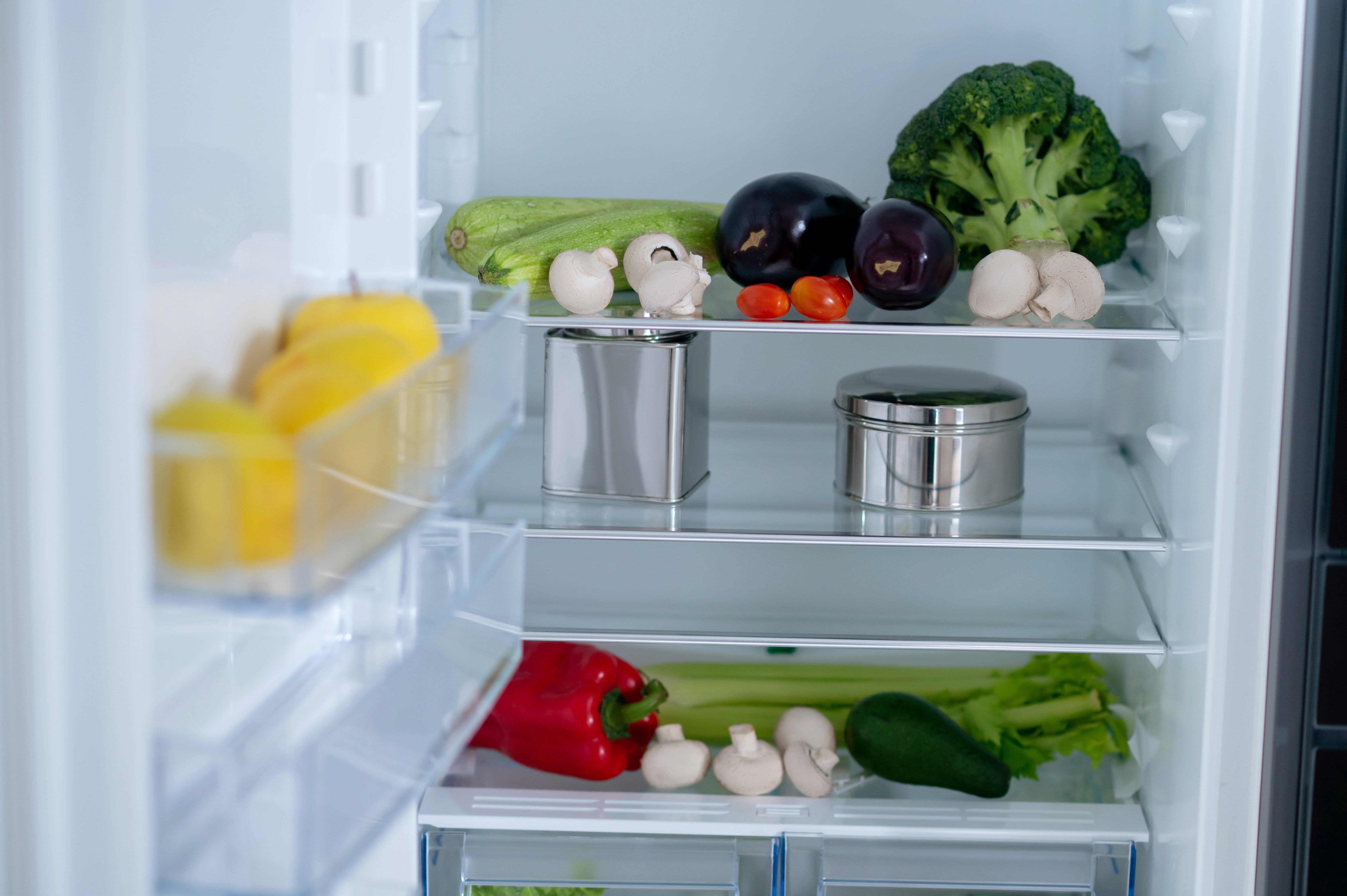
How to organize fridge shelves to optimally use the space?
Organizing fridge shelves is crucial for maintaining the right temperature and freshness of products. On the top shelves, where the temperature is slightly higher, it's worth storing products that don't require intense cooling, such as jams, preserves, or ready meals. The middle shelves are ideal for storing dairy, cold meats, and cheeses. Remember not to pack products too tightly, as this could prevent air circulation and lead to uneven cooling. It's also important to regularly clean the shelves to prevent bacterial growth.
What are the most common mistakes in storing food in the fridge?
One of the most common mistakes is putting hot dishes into the fridge, which raises the internal temperature of the device and increases energy consumption. Another common mistake is storing food in wrong places, e.g., meat on the fridge doors. Many people also forget about regularly cleaning the fridge, which can lead to bacterial growth and unpleasant odors. It's also crucial not to overload the fridge, as too many products can hinder air circulation and lead to uneven cooling.
What are the advantages of fridges with the No Frost system?
No Frost fridges are a great solution for those who want to avoid the problem of frosted walls and the need for regular defrosting. The No Frost system works by continuously circulating air inside the fridge, preventing moisture buildup and frost formation. As a result, food is evenly cooled, and the fridge requires less maintenance. The No Frost system is especially recommended for storing high-moisture products like vegetables and fruits, as it prevents them from drying out.
What are the benefits of using a fridge thermometer?
A fridge thermometer is a simple yet very useful tool that allows you to accurately monitor the temperature inside the device. It lets you ensure the temperature is optimal for the stored products, which is especially important in older fridge models that may not have precise temperature control systems. A fridge thermometer is also useful in case of device failure, as it allows for quickly detecting cooling issues. It's advisable to regularly check the fridge temperature to avoid unnecessary food waste.
What are the latest trends in refrigerator design?
Modern refrigerators are not only about functionality but also design and innovative technological solutions. One of the latest trends is the integration of refrigerators with smart home systems, which allows for remote monitoring and temperature control via smartphone apps. Refrigerators with transparent doors are also becoming increasingly popular, enabling quick content checks without opening the door. Another interesting trend is the use of eco-friendly solutions, such as fridges with energy reduction systems or the use of environmentally friendly materials.
What is the optimal temperature in the freezer?
The optimal temperature in the freezer should be around -18 degrees Celsius. This value ensures safe storage of frozen foods, inhibiting bacterial growth and preserving the nutritional value of products. In the case of Samsung refrigerators, it's worth checking the manufacturer's recommendations, as some models may have slightly different settings. Remember that too low a temperature in the freezer can increase energy consumption, while too high can reduce the shelf life of stored food.
How to increase the temperature in the fridge?
If you want to increase the temperature in the fridge, you can do so using the thermostat knob or control panel. In Whirlpool fridges, the knob is usually set to lower values to raise the temperature. In newer models with electronic control, you just need to select the appropriate option in the menu. Remember that the temperature at which the fridge should be set, depends on the type of products stored. The recommended temperature is 4–5 degrees Celsius in the main compartment. In LG fridges, check the manual to precisely adjust the settings to your needs. And what – apart from the fridge, of course – should be in a well-designed kitchen?

